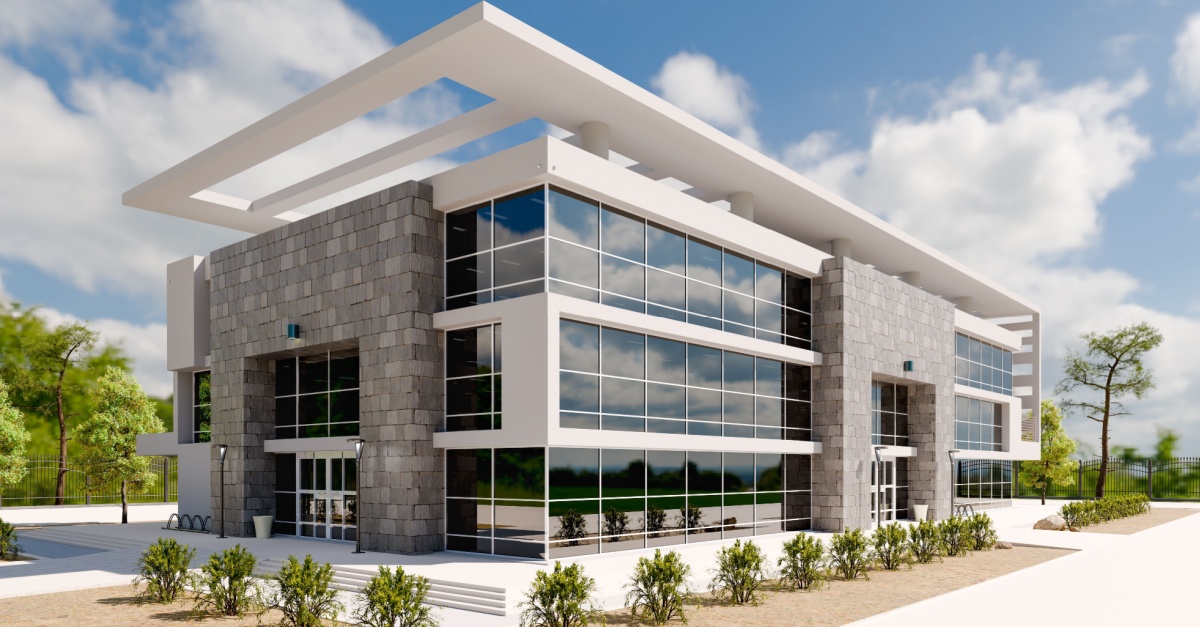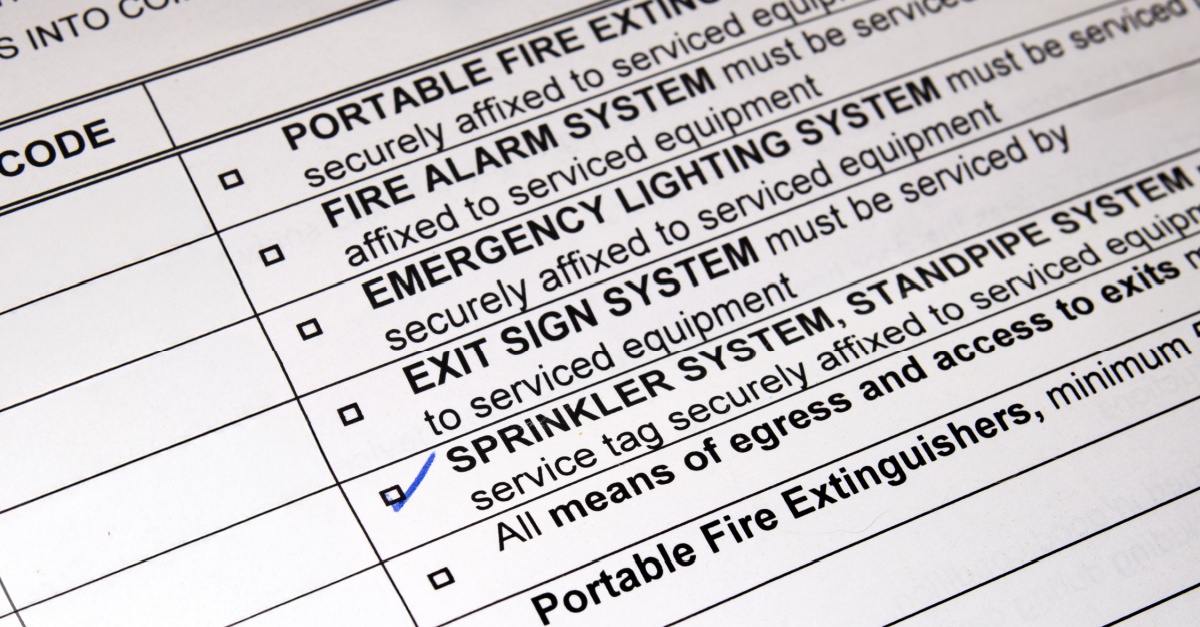
7 Best Practices for Exterior Facility Maintenance
May 29, 2025
Walk up to any storefront, restaurant, or clinic, and chances are your first impression forms before you even step inside. Facility leaders across industries — from retail and restaurants to healthcare and banking — know that a building’s exterior is deeper than appearances. It’s a direct reflection of brand, safety, and operational standards. Maintaining consistent quality and curb appeal while avoiding unexpected costs becomes increasingly complex when managing multiple locations. In 2025, top-performing organizations are adopting smarter, data-backed exterior facility maintenance programs that prioritize preventative action over reactive fixes.
Backed by the latest benchmarks and real-world results, these facility maintenance management strategies are helping facility and construction leaders reduce risk, control spend, and deliver a consistently positive impression across every property. From leveraging technology for proactive inspections to planning seasonal upgrades that boost visual appeal and safety compliance, the following seven best practices offer a proven framework. Each recommendation is designed to help VPs of facilities, directors of construction, and property teams drive measurable ROI while strengthening their brand presence site to site.
Best Practice 1: Implement a Proactive Maintenance Program
Proactive maintenance is a cornerstone of long-term asset preservation and cost control. By conducting routine inspections — monthly or quarterly — facility teams can catch early warning signs before they escalate into costly emergencies. Standardized checklists for rooftops, facades, parking lots, signage, and landscaping ensure no element is overlooked. Addressing small issues like cracks or lighting failures early prevents them from snowballing into major capital repairs.
Proactive maintenance has been shown to reduce unplanned downtime by 35-45%, while reactive fixes can cost up to 10× more due to scope creep and collateral damage. And the financial stakes are real: As one facilities report noted, even a single hour of unplanned downtime can cost large organizations $25,000 — or as much as $500,000 — in lost business and repairs. To avoid those losses, top operators rely on predictive tools like IoT sensors and FM software to trigger alerts and work orders before failure occurs, maximizing ROI while protecting brand image across every location.
Best Practice 2: Prioritize Curb Appeal and First Impressions
First impressions start before a customer ever walks through the door. The condition of your facility’s exterior influences public perception, foot traffic, and even tenant retention. A 2024 survey found that 95% of shoppers said a store’s exterior appearance impacts their decision to enter, and more than half reported avoiding businesses with unkempt facades. Regular exterior facility maintenance — like litter removal, power washing, graffiti cleanup, and window cleaning — sends the message that your business is professional, trustworthy, and attentive to detail.
Even small lapses, such as overgrown shrubs or a flickering sign, can erode confidence and deter visits. For property managers and brand leaders, curb appeal isn’t just about aesthetics — it’s a performance metric. Facilities that invest in routine exterior upkeep consistently with their facility maintenance management see higher customer satisfaction scores and lower vacancy rates. By embedding curb appeal into daily operations, you protect your reputation, strengthen brand equity, and elevate the experience for every visitor.
Best Practice 3: Ensure Safety and Compliance on All Sites
It only takes one uneven curb or darkened stairwell to turn a routine visit into a liability nightmare — and those moments add up fast. U.S. businesses face an estimated $70 billion per year in costs related to employee slip-and-fall injuries, including medical bills, lost productivity, and legal fees. That’s why ensuring safety and compliance across all sites isn’t just a legal obligation — it’s a smart financial strategy. Start by auditing each location for hazards and confirming compliance with local building codes and the Americans with Disabilities Act (ADA).
Ramps, handrails, accessible parking, and walkways should be well-maintained, properly marked, and free of obstructions. Use slip-resistant materials and identify elevation changes. Prioritize lighting audits and consider smart upgrades to reduce risk and boost energy efficiency. Regular updates to meet evolving regulations demonstrate accountability, help protect both your people and your bottom line, and are essential for any facility maintenance management. Prevention today means fewer claims and safer outcomes tomorrow.
Best Practice 4: Leverage Technology for Efficient Maintenance
One of the most impactful best practices in exterior facility maintenance is embracing technology to streamline operations, reduce costs, and improve consistency across multisite portfolios. Centralized platforms like cloud-based CMMS allow teams to manage all exterior facility maintenance from a single dashboard, giving instant visibility into open work orders, vendor status, and recurring asset issues (brandpointservices.com). For example, if multiple sites experience damage from a seasonal storm, the system can track and dispatch repairs in real time, ensuring no location is overlooked.
IoT devices add another layer of efficiency — smart sensors in landscapes, parking lots, or on HVAC units provide alerts when conditions change or failure is imminent. This predictive maintenance capability helps avoid emergencies and cuts down on energy waste. Additionally, mobile apps and GIS tools help teams identify issues on-site, route repairs faster, and map asset history by location. When technology is fully leveraged, facilities teams operate smarter, not harder
Best Practice 5: Standardize Processes and Partnerships Across Locations
One of the most impactful best practices in exterior maintenance is embracing technology to streamline operations, control costs, and improve consistency across multisite portfolios. Cloud-based CMMS platforms enable facility teams to manage all exterior tasks from a single dashboard, tracking work orders, vendor performance, and recurring issues in real time. For instance, after a seasonal storm, a centralized system ensures every affected site is accounted for and repairs are dispatched without delay.
Layer in IoT devices — such as soil moisture sensors, HVAC vibration monitors, or light pole outage detectors — and you unlock predictive maintenance that prevents emergencies before they occur. Mobile apps and GIS tools further enhance efficiency, letting teams geo-tag issues, map assets, and automate inspection cycles. Critically, data-driven maintenance combined with smart controls has been shown to reduce energy costs by 10-20% in multisite operations. When used strategically, technology doesn’t just improve maintenance — it delivers measurable ROI.
Best Practice 6: Prepare for Seasonal Challenges and Climate Impacts
Smart facility leaders treat seasonal shifts not as disruptions but as planning triggers. Each season brings predictable exterior stressors — freeze-thaw damage in winter, heavy rains in spring, heat-related deterioration in summer — and your maintenance calendar should anticipate them. By late winter, proactive teams are already scheduling spring exterior work: restriping lots, refreshing landscaping, and repainting facades. Come August, winter prep begins — securing snow removal contracts, inspecting roofs and gutters, and repairing pavement before cold weather sets in.
This forward scheduling reduces reactive costs and helps secure labor and materials before demand spikes. According to 2024 FM cost benchmarks, early seasonal planning can lower service costs by 10-15% and reduce asset downtime by up to 20%. Plus, it minimizes disruption by aligning maintenance with off-peak hours or slow seasons. Seasonal preparedness isn’t just weatherproofing — it’s a strategic rhythm that ensures your portfolio stays protected, compliant, and visually on brand all year long.
Best Practice 7: Regularly Refresh and Upgrade Your Exteriors
Over time, even high-performing facilities start to show their age: faded paint, worn signage, cracked walkways, rusted fixtures, or outdated branding can all quietly chip away at your customer experience. That’s why top facility and construction leaders build regular exterior refreshes into their capital planning — not as vanity upgrades, but as smart, revenue-impacting investments. A structured approach that cycles through repainting, lighting improvements, storefront updates, and refreshed entry zones keeps every site aligned with brand standards and local market expectations. The business case is strong: After a remodel, sales to new customers have been shown to increase by more than 40%, while sales to existing customers can climb by as much as 10%. In competitive markets, these updates can mean the difference between getting noticed and getting skipped. Routine refreshes protect both your brand perception and your bottom line.
Future-Ready Exterior Maintenance Starts Now
Elevating your exterior facility maintenance strategy takes more than good intentions — it takes the right partner. BrandPoint Services helps facility and construction leaders execute every phase of exterior upkeep with precision and scale. From routine repairs and safety upgrades to lighting retrofits, signage refreshes, painting, rebranding rollouts, and seasonal curb appeal improvements, our nationwide network of vetted trades and dedicated project managers ensures your properties stay safe, sharp, and on brand.
We specialize in multisite coordination, so whether you’re refreshing five locations or 500, you get consistent results with minimal disruption. Our team goes beyond reactive fixes — delivering proactive maintenance programs, long-lasting materials, effective facility maintenance management, and cost-efficient strategies that safeguard your assets and minimize long-term expenses.
If you’re ready to streamline exterior maintenance and boost brand performance across your portfolio, talk to an expert at BrandPoint Services, the partner that delivers. Let’s protect your investment — and enhance your curb appeal — at every site.






